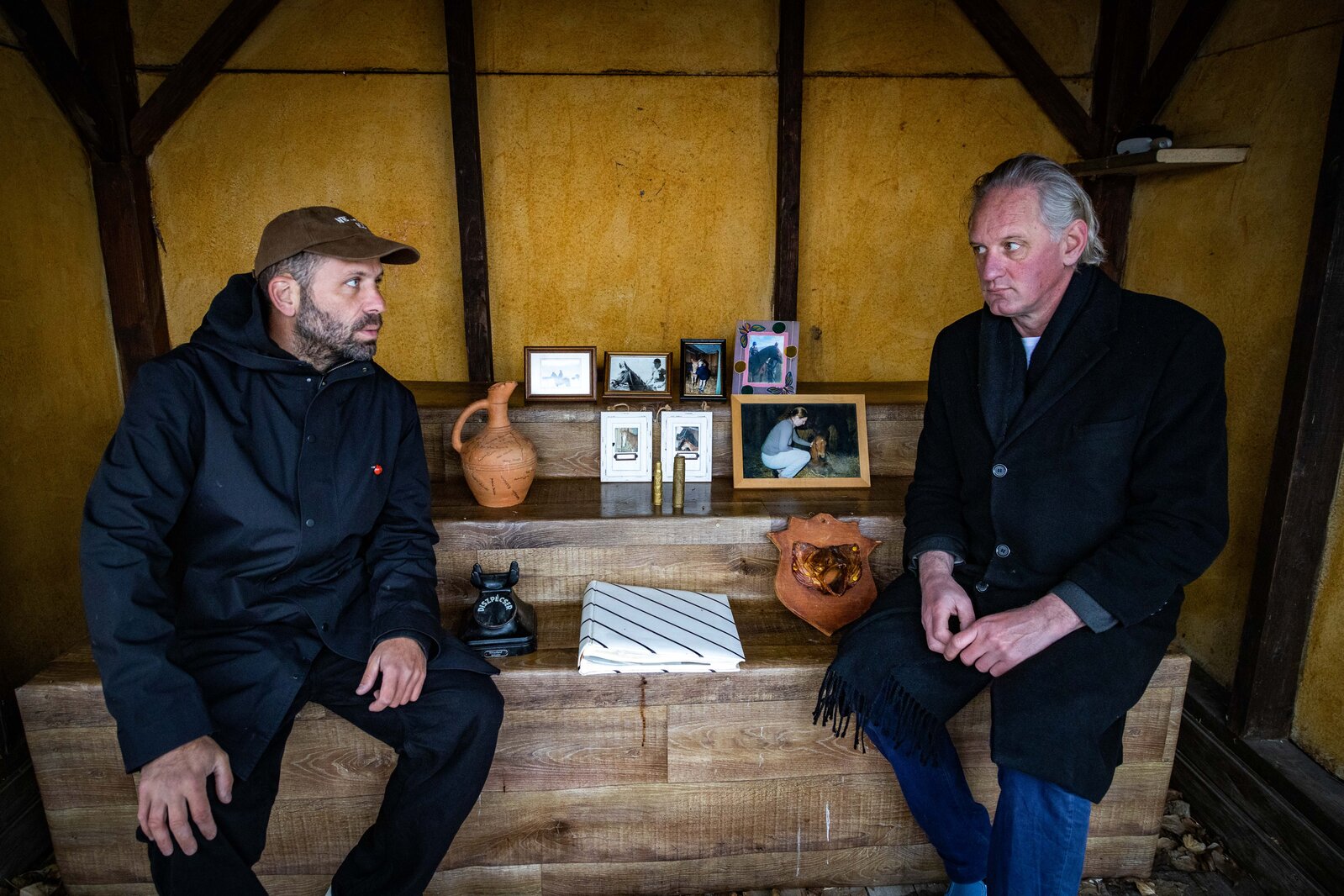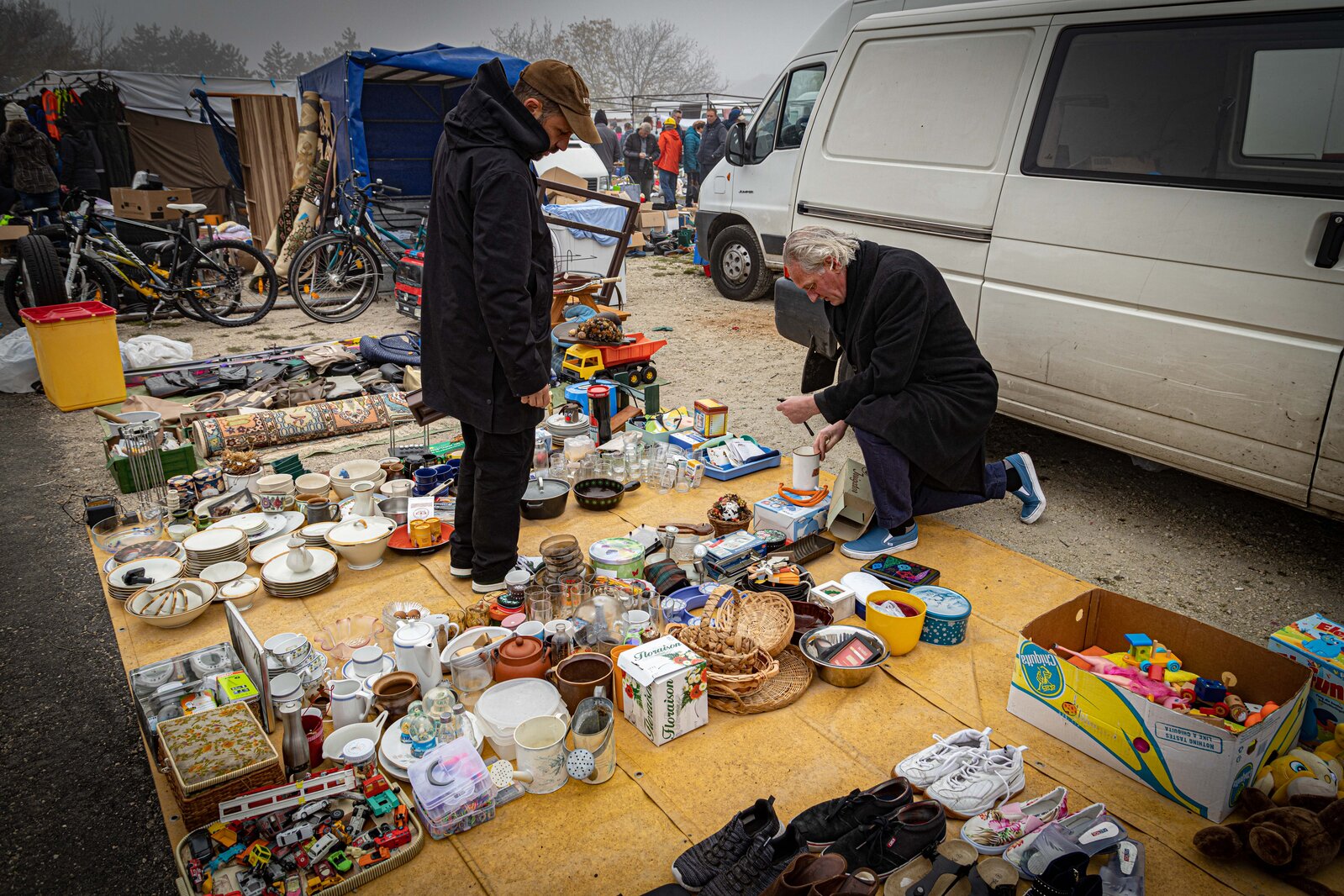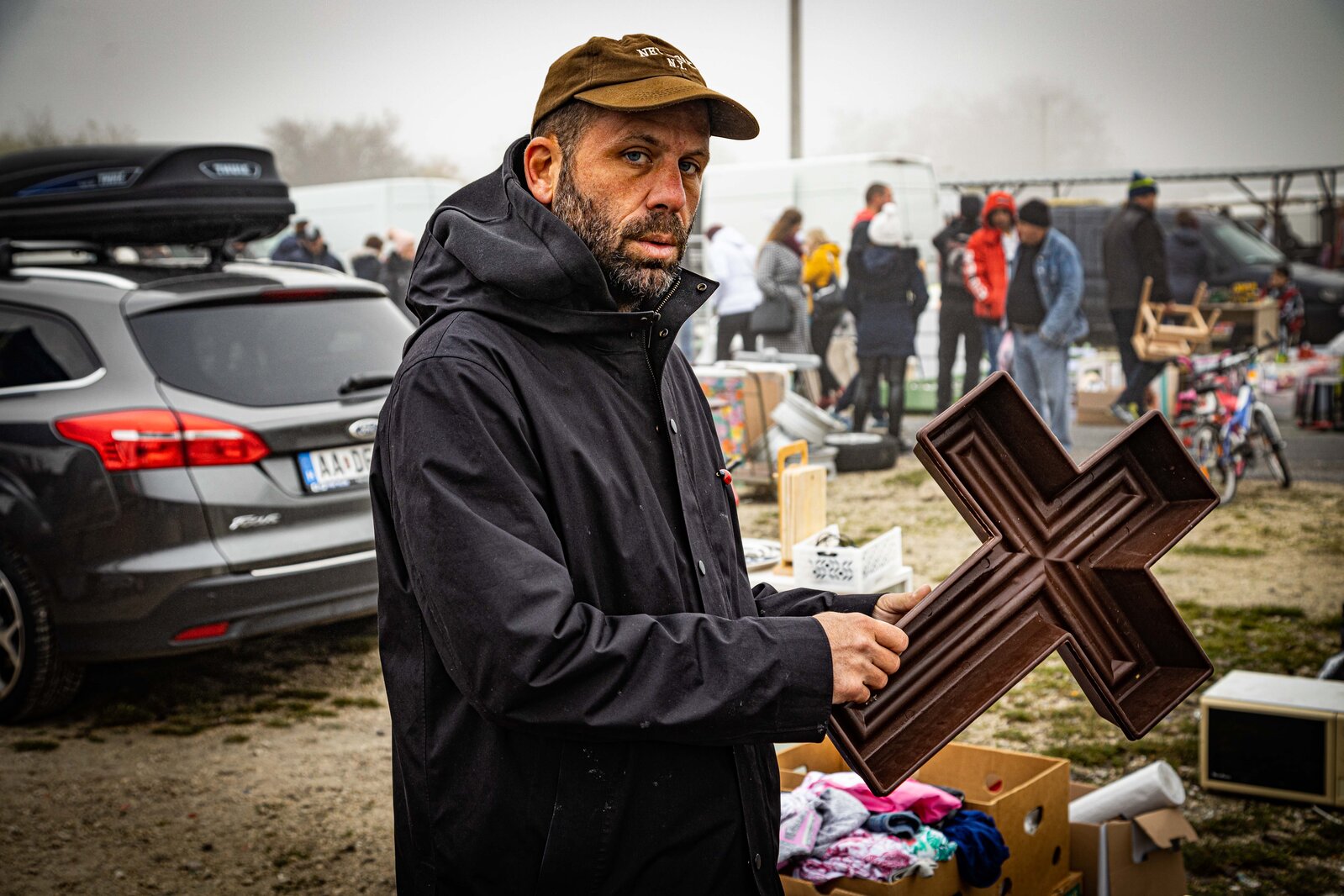Europe Archive – The Artists in Residence (AIR) photography programme will debut at the House of Arts in June 2023
What are a Dutch and a French artist doing at the flea market in Veszprém? Erik Kessels and Thomas Mailaender have made it their mission to create a collective memory project of relics collected at European flea markets. The first stop on the European tour will be an exhibition organised by the VEB2023 European Capital of Culture (ECOC) programme next summer at the Dubniczay Palace in Veszprém, which the artists recently came to visit.

We have already reported on the House of Arts' visual Artists in Residence programme, which saw painters András Bernát and Peter de Thouars return to Tihany, where they first met decades ago. Erik Kessels and Thomas Mailaender visited Hungary this autumn for the photography residency programme.
As the two artists describe the project, when people move from one place to another, the objects they own travel with them. They call it the great migration of things because these objects move from one room to another, perhaps to a new house, to an auction or a flea market. And, as they say, flea markets are fading due to globalisation, mass production, consumerism and online shopping. The chances of objects appearing in their proper place are also shrinking. Once they disappear, their memory will be gone as well. It is why the Europe Archive Project was launched.

Collective memory in focus through photography
It is actually a collective memory project. It is inspiring because it is linked to the history of the Veszprém-Balaton region and Hungary, with Erik from the Netherlands and Thomas from Marseilles collecting objects at antique and junk markets to create an exhibition. Having visited several countries, they have already created a whole network and a collection from all over Europe. Their website gives a precise overview of the objects they have collected at each location,
- says Bernadette Grászli, Director of the House of Arts.
This artist in residency programme is special because a travelling exhibition, a unique initiative in Hungary will be joining it. It will be a container exhibition space with a gold finish mounted on the chassis of a truck. It will tour the region, allowing the interested public to see the exhibited objects at several stops. The container will arrive in front of the Dubniczay Palace in Veszprém on 22 June 2023. The exhibition inside will also open at that time, so the two projects are complementary. The show will be on view until 27 August, curated by the art historian Claudia Küssel
– says Bernadett. She adds that next summer will be particularly exciting for the House of Arts. The AIR programme will be launched during the week of the Night of Museums. This will also be the time to introduce the pan-Balaton photography project of Dezső Szabó and Ábel Szalontai, with accompanying professional programmes and workshops.
Old friendships, numerous joint projects
"We have worked on several projects with Erik. Photography binds us. One of our last collaborations, entitled Smash Gallery, recently ended in Italy. It was a kind of transition between an exhibition and a performance," says Thomas.
"What Thomas and I have in common is that we share a passion for reusing different photos and objects. People begin to see objects differently when you take them out of their original environment. This happens when we go to the flea market. You have all these objects around you. Once you select one piece out of the many, however, and put it in a new context, you get to know its story and it becomes become more understandable for others," says Erik. He explains the idea behind the Europe Archive project is by wanting to raise awareness that ordinary objects which used to characterise a country are slowly disappearing.

The main objective of the Europe Archive is to capture and freeze time by using objects in our fast-paced world, where people receive more stimuli (in the form of emails, images and sounds) in their lunchtime than an 18th-century person did in a lifetime
– he adds.
Collecting in Hungary
Erik has been to Hungary before and has had several solo exhibitions. This November, he and Thomas visited several markets in Budapest and Veszprém, including the Polish Market at Házgyár Street, where Bernadett and a crew accompanied them. Later they also visited the Dubniczay Palace, the future venue of the exhibition.
We probably see the history of our home or hometown differently from how an outsider might. At the market in Veszprém, Bernadett and our other companions were surprised at the objects that caught our eye. Objects may seem important and prominent in a completely different way than others think. That's why it's good to look at culture with 'fresh' eyes, which is essentially the main purpose of our visits to the market
- Thomas told us.

As he says, each market was completely different, with the one in Veszprém being the largest and also the most diverse. In addition to various antiques, you could also buy food and even clothes there. According to Erik, these places tell much more than one might expect.
These markets are also a very true reflection of the country’s society, both good and bad. You get to see things you might not necessarily want to see. We don't just look for things at flea markets, in second-hand shops or online, but we may also stumble across an object with a special story in the street.

The artists would like to increase the number of objects collected from all European countries to about one hundred pieces, so the project is ongoing. In partnership with the VEB2023 ECOC programme, Hungary will be the focus in 2023. Erik also mentions that recycled or repaired objects are particularly important in the collection.
"Nowadays, objects disappear incredibly fast, often from one day to the other, due to the influence of the consumer society, with people throwing things away instead of repairing them. But restored or repaired objects are truly wonderful because they retain the owners' intentions and purposes. The entire European collection will show how different and often similar the people of Europe are. What we are doing is a kind of modern archaeology. The objects we find are often only worth a few euros, but the story behind them is fantastic and has real value,"
- says Erik.
Plans for the exhibition
As Bernadett mentioned, a container exhibition on a truck will travel around the region to promote the Veszprém exhibition and allow people to see the collection in various locations around Lake Balaton. After the market visits, the artists came up with the idea to launch an appeal to the community for people to contribute objects to the exhibition.
"We envisioned a European network so that this exhibition will be the first stage of a long-term project. We want to continue it in the future. It can be done in practically any neighbourhood, in any city in Europe," says Thomas, describing their plans.
And Erik also says that they will be returning to Hungary several times before the VEB2023 ECOC exhibition in June to collect material, to plan and prepare.
There's still a lot of work ahead of us but searching flea markets and looking for objects is the fun part of the project. We want to continue it in the future. People usually come across art and objects from a bygone era in museums. In contrast, we do an archival overview of objects from the present era that will be of immense value in the future.
